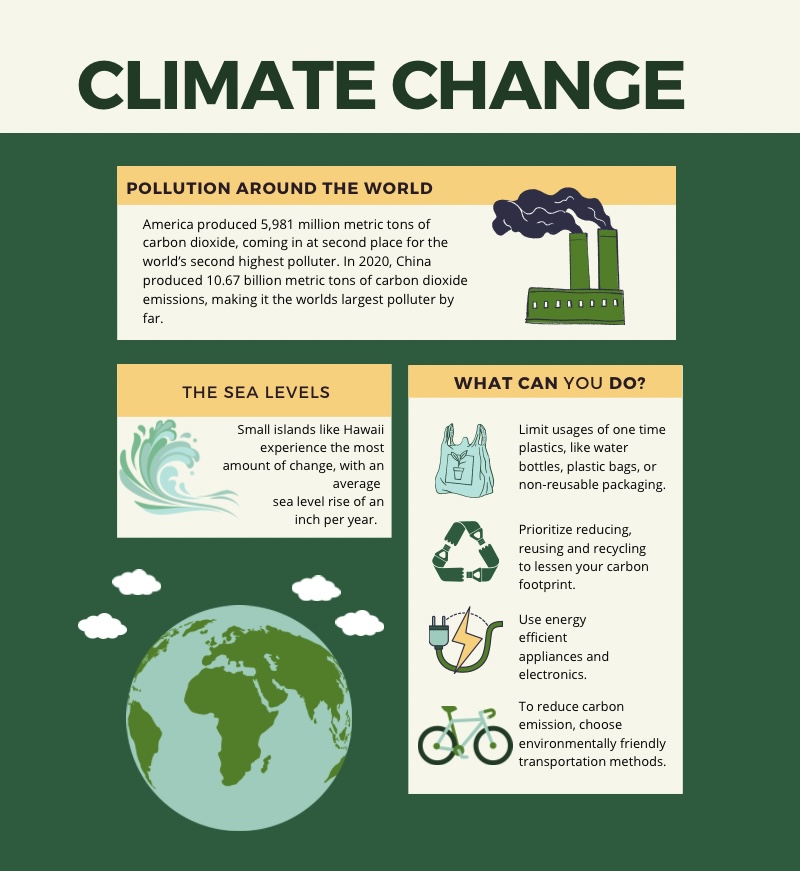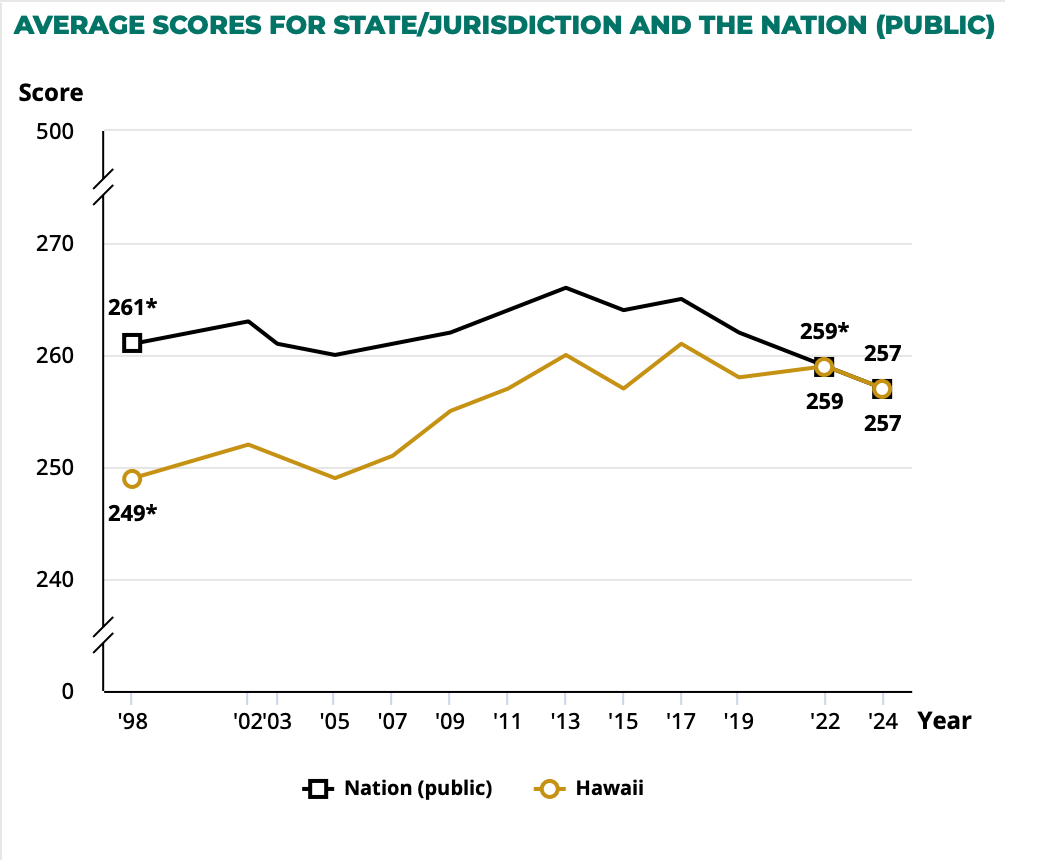Hawaii: On The Brink of Ruin
Infographic on the Cause and Effects of Climate Change around the world.
November 17, 2022
Last week, hurricane Ian leveled Florida with winds topping 155 mph; and that’s just the latest sign that the earth is taking a beating. Scientists are warning of similar catastrophic weather patterns that indicate that our environment is under assault.
From coral bleaching to dramatically changing rainfall, climate change is dangerously close to breaking Hawaii’s already fragile ecosystem.
Due to the rising acidity levels in the global ocean’s waters, there’s been a mass of coral bleaching, a process where coral turns white and eventually breaks off.
With the natural barrier of coral dissipating, the island is left completely defenseless against the flooding caused by natural disasters such as tsunamis and hurricanes.
Lack of water could be an issue as well.
According to Global Climate, multiple studies have found that changes in rainfall could be attributed to shifts in the global wind pattern.
According to National Weather Reports, throughout the past year, Hawaii’s precipitation rate has recently been in the single digits.
Since Hawaii has previously suffered from water contamination, the lack of rainfall could potentially threaten water resource accessibility.
According to Hawaii’s government website, as of today, Hawaii has 66,000 people regularly at risk from coastal flooding. In Kailua, for example, 50% of the population is locked in below expected flood zones. This may result in monetary losses, from rising flood insurance premiums to repairs caused by flood damage.
In order to better understand global warming and how to prevent these drastic measures, Ellie Garrett, a sophomore at Mid-Pacific, advises that we as individuals educate ourselves on the topic.
“We have to be able to advocate for it [global warming prevention measures]. We have to educate ourselves so that we truly know what we can do, and then what we can do on a broader scale,” Garett said.
According to NOAA and NASA, taking steps right now such as using more energy-efficient resources and adapting to the changing environment may avoid or limit some of the worst effects of climate change.
Mitigation, or reducing the flow of greenhouse gasses into the atmosphere, is one of the biggest determining factors. A few methods to undertake include using renewable energy sources, such as solar or wind, to power homes and buildings.
It is not possible to reverse the damage already done, but doing what is feasible to prevent greater damage would be better done now.
“All the things we thought would be totally apocalyptic 20 years ago is happening today. Giant storms, droughts, flash floods- and yet, no state, no country, no one’s stepped up. I think we need to step up together,” Maile Vasconcellos, IB science teacher said.








